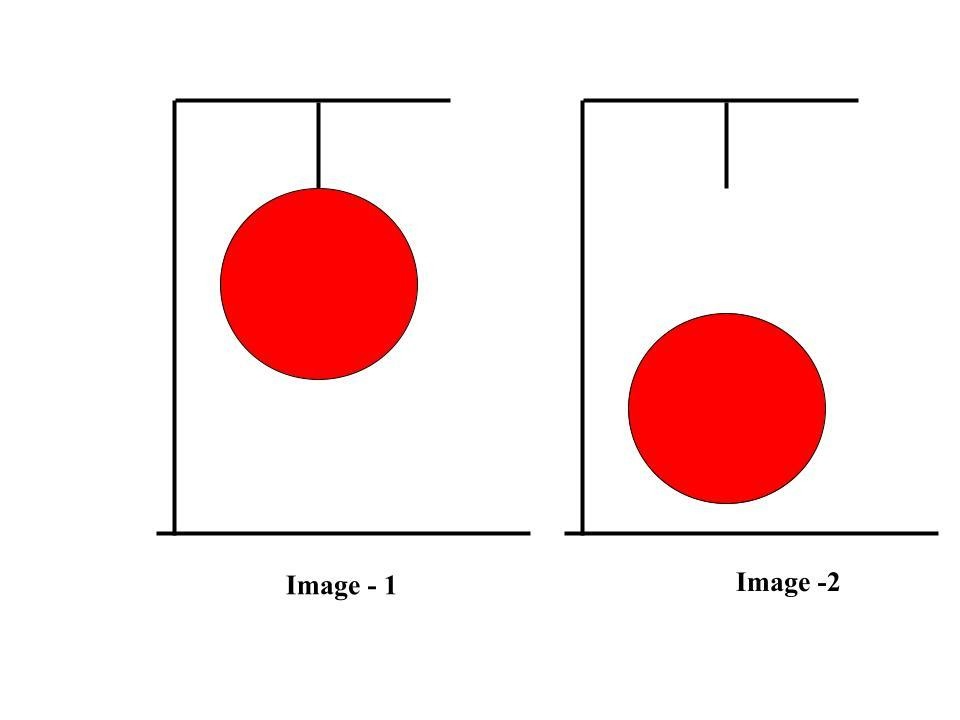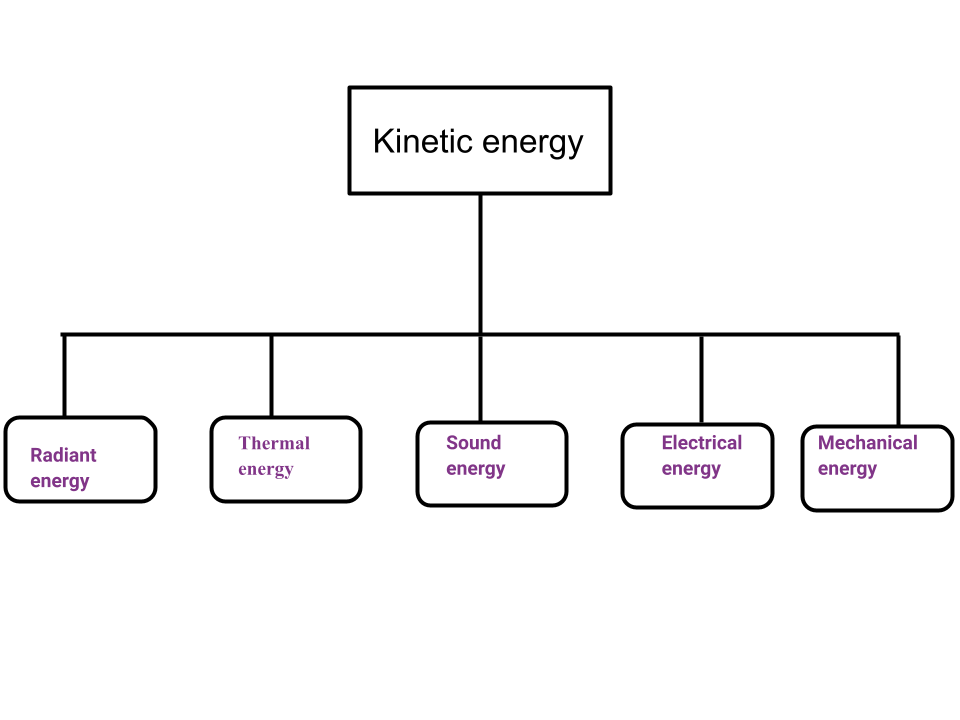Kinetic Energy - Definition, Examples, Formula, FAQs
Kinetic energy is the energy of motion, and it's a fundamental force that shapes our world. Whether it's a car speeding down the highway, a soccer ball flying through the air, or even the simple act of walking, kinetic energy is at play. It moves objects, tells us about their speed, and helps us understand the concept of momentum. By exploring kinetic energy, we can appreciate the beauty and simplicity of this powerful force and see how it influences our everyday lives
JEE Main/NEET 2027: Physics Important Formulas for Class 10
NEET 2025: Mock Test Series | Syllabus | High Scoring Topics | PYQs
JEE Main: Study Materials | High Scoring Topics | Preparation Guide
JEE Main: Syllabus | Sample Papers | Mock Tests | PYQs
- Definition of Kinetic Energy
- Kinetic Energy Examples
- Formula of Kinetic Energy
- Unit of Kinetic Energy
- Types of kinetic energy
- Difference between Kinetic Energy and Potential Energy
- Solved Example Based On Kinetic Energy

In this article, we are going to study kinetic energy, how it depends on the frame of reference, the work-energy theorem, and its relationship with linear momentum. This topic falls under the broader category of work, energy, and power, which is a crucial chapter in Class 11 physics. It is not only essential for board exams but also for competitive exams like the Joint Entrance Examination (JEE Main), National Eligibility Entrance Test (NEET), and other entrance exams such as SRMJEE, BITSAT, WBJEE, BCECE and more. Over the last ten years of the JEE Main exam (from 2013 to 2023), more than ten questions have been asked on this concept. And for NEET four questions were asked from this concept.
Let's read this entire article to gain an in-depth understanding of Kinetic energy.
Definition of Kinetic Energy
Kinetic energy meaning: it is the energy created by an object as a result of its motion. When an object is set to accelerate, it is imperative that specific forces be applied. Work is required to apply force, and once the work is completed, the energy is transmitted to the object, causing it to move at a constant velocity. The word kinetic meaning is something related to or resulting from motion. The energy transferred is referred to as kinetic energy in this case, and it is dependent on the speed and mass of the object.
Kinetic Energy definition
“The kinetic energy of an object is known as the energy obtained by the object because of its motion.”
Also read -
- NCERT Solutions for Class 11 Physics
- NCERT Solutions for Class 12 Physics
- NCERT Solutions for All Subjects
How does Kinetic Energy get transferred?
Kinetic energy is a type of energy that may be exchanged between objects and turned into other forms of energy. The yo-yo is an excellent illustration of kinetic energy transformation. When you first start playing with it, you should let it rest in your hand; at this time, all of the energy is stored in the ball as potential energy. When a person drops the yo-yo, the stored energy is converted into kinetic energy or movement energy. All of the energy in the ball is transformed into kinetic energy once it reaches the bottom of the yo-yo. As it returns to the hand, all of the energy is transformed back to potential energy.

There is a ball (Image-1) that has potential energy, when we dropped the ball (Image-2) the ball started falling and now it has Kinetic Energy.
Learn kinetic Energy Better from the Given Video Below
Kinetic Energy Examples
Here are some daily-life examples of kinetic energy…
- Moving car
- Bullet from gun
- Throw of a ball
- Windmills
- Running
Formula of Kinetic Energy
The kinetic energy is given by the following formula
$\mathrm{K.E}=1 / 2 \mathrm{MV}^2$
Where M is the mass of the object, V is the velocity of the object and KE is kinetic energy.
|
Related Topics, |
Unit of Kinetic Energy
The SI unit of kinetic energy is the joule.
1 joule $=\mathrm{Kg} \cdot \mathrm{m}^2 \cdot \mathrm{~s}^{-2}$
The CGS unit of kinetic energy is erg.
How can we calculate Kinetic Energy?
We know that work done is written as …
W= f.d = m.a.d ……….(1)
We know that $v_f^2-v_i^2=2 a d, d=\left(v_f^2-v_i^2\right) / 2 a$
placing the value of ' d' in equation(1)
$$
\begin{aligned}
& \text { Then.. } W=m \cdot a \cdot\left(v_f^2-v_i^2\right) / 2 a \\
& =1 / 2 m\left(v_f^2-v_i^2\right) \\
& =1 / 2 m v_f^2-1 / 2 m v_i^2
\end{aligned}
$$
Types of kinetic energy
Kinetic energy has five types

- Radiant energy
It is a type of kinetic energy that is always in motion. Examples of radiant energy…
- Ultraviolet light
- Gamma rays
- Beta ray
- Thermal energy
Thermal energy, often known as heat energy, is produced when atoms clash with each other. The following are some examples of thermal energy:
- The warmth of the sun
- A cup of hot milk
- Explosion of firecrackers
- Sound energy
It is produced by vibrating an object, it always travels in the medium. It can’t travel by vacuum. Examples of sound energy are:
- Tuning fork
- Beat of drum
- Sound of hor
- Electrical energy
The free electrons, both positive and negative in charge, provide electrical energy. The following are some examples of electrical energy:
- Battery
- Lightning
- Mechanical energy
The sum of kinetic energy and potential energy is known as mechanical energy.
Examples:
- A moving truck
- A rocket in orbit
Difference between Kinetic Energy and Potential Energy
|
Kinetic energy
|
Potential energy
|
| The energy created by an object as a result of its motion is known as kinetic energy. | The energy created by an object due to its position or state. |
| The formula of kinetic energy is K.E=1/2 mv2 | The formula of potential energy is mgh |
| Vibrational energy is an example of kinetic energy. | Gravitational potential energy is an example of potential energy. |
Solved Example Based On Kinetic Energy
Example 1: An athlete of mass 50kg in the Olympic games covers a distance of 100 m in 10 s. His kinetic energy can be estimated to be in the range
1) 2,000 J−5,000 J
2) 200 J−500 J
3) 2×105 J−3×105 J
4) 20000 J−50000 J
Solution:
Kinetic energy
k=12mv2
wherein
m→ mass
v→ velocity
Kinetic energy is never negative

Initial velocity = 0
Final velocity $=v_f$
$S=u t+12 \mathrm{at} 2 \Rightarrow 100=0+12 \times \mathrm{a} \times 100 \mathrm{a}=2 \mathrm{~m} / \mathrm{s} 2$
Maximum speed $(a)=20 \mathrm{~m} / \mathrm{s} 2$
Maximum K.E. $=12 \mathrm{mv} 2=12 \times 50 \times 400=10,000 \mathrm{~J}$
Maximum speed (a) $=20 \mathrm{~m} / \mathrm{s} 2$
Maximum K.E. $=12 \mathrm{mv} 2$
If it runs with constant velocity $\mathrm{v}=10 \mathrm{~m} / \mathrm{s}$
Then K.E. $=12 \times 50 \times 100=2500$
So it lies between 2500 to $10,000 \mathrm{~J}$.
Example 2: The average mass of raindrops is $3.0 \times 10-5 \mathrm{~kg}$ and their average terminal velocity is $9 \mathrm{~m} / \mathrm{s}$. Calculate the energy transferred by rain to each square meter of the surface at a place that receives 100 cm of rain in a year.
3. 5×105 J
2) 4.05×104 J
3) 3.0×105 J
4) 9.0×104 J
Solution:
Total volume of water in 1 m 2 area
$$
=1 \mathrm{~m} 2 \times 100 \mathrm{~cm}=1 \mathrm{~m} 3
$$
Total mass in 1 m 2 area $=\rho \vee=103 \times 1 \mathrm{Kg}=103 \mathrm{Kg}$
Kinetic energy $=1 / 2 \times 103 \times 92=4.05 \times 104 \mathrm{~J}$
Hence, the answer is option (2).
Frequently Asked Questions (FAQs)
The kinetic energy of an object is written by K.E=1/2 mv2
The SI unit of kinetic energy is the joule.
NO, kinetic energy cant be negative because of the square of velocity gives positive and mass
Never be negative.
Kinetic energy is maximum when velocity is maximum and mass is in equilibrium, position
Also Read
28 Nov'24 02:56 PM
22 Nov'24 07:42 AM
21 Nov'24 04:30 PM
21 Nov'24 02:19 PM
20 Nov'24 07:40 PM
14 Nov'24 04:18 PM
12 Nov'24 10:07 PM
12 Nov'24 09:16 PM
26 Sep'24 10:49 AM